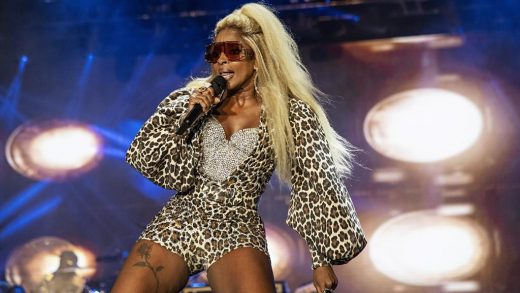At the Paris Olympics, AIN hides the identity of the few Russian and Belarusian athletes

PARIS (AP) — Exactly one week after thousands of athletes sailed through the opening ceremony at the Paris Olympics, a gold medal was finally won Friday by a member of the neutral collective of athletes.
Ivan Litvinovich was barred from boarding a boat on the River Seine — just like all 32 athletes from Russia and Belarus whose Olympic team identity has been made almost invisible because of their nations’ military invasion of Ukraine.
When standing on the top step of the podium, Litvinovich was prohibited from hearing the Belarus anthem. Playing instead was a nondescript, wordless tune commissioned by the International Olympic Committee.
These are the Olympic rules of engagement for the 32 athletes who were vetted and approved — and accepted their invitations — to come to France and compete for the team-that’s-not-a-team.
Earlier Friday, when the first of them won a medal, it was not the international sports signifier BLR for Belarus next to Viyaleta Bardzilouskaya’s name.
Bardzilouskaya took silver in women’s trampoline for AIN, the French acronym for Individual Neutral Athlete, whose collective medals are barred from being tallied on the official team standings.
Almost 2 1/2 years after Russia invaded Ukraine with backing from neighboring Belarus, the two countries mostly feel like pariahs in world sports.
What are Russia and Belarus banned from and by who?
Russia and Belarus are not “banned” from the Olympics, as such, though they won’t be in any team sports at the Paris Games. And they could not have a boat at the opening ceremony.
It was Feb. 24, 2022, that Russia invaded, four days after the Beijing Winter Games closed and still in the Olympic Truce period Russian diplomats had signed up to at the United Nations.
Within hours in Europe, national teams in soccer and other sports, plus countries hosting winter sports events, refused to engage with Russian teams and athletes.
The IOC moved within days to urge Olympic sports bodies to pull upcoming events from Russia and Belarus and remove their teams and athletes, for reasons of security and integrity of competitions.
Russians did keep on competing abroad in individual sports, like tennis and cycling. As qualifying events for the Paris Olympics approached, the IOC eased its advice — against Ukrainian pleas — to encourage governing bodies toward reintegrating some athletes.
During 2023, the IOC settled on its Paris Olympics policy: No Russian or Belarusian teams, which by definition represent a nation, but invite selected athletes. They must have passed vetting first by their sport’s governing body, then the IOC, to have not supported the war nor had funding or links to military or state security agencies.
The long and picky vetting processes both infuriated officials in Russia — claiming it was humiliating and politicized — and let the IOC avoid imposing a blanket ban. That severe option could have been legally challenged. It also risked setting a tricky precedent to follow in future wars involving other countries.
Some sports do still have a total ban on Russia internationally: soccer’s FIFA and track and field’s World Athletics.
How many AIN athletes came to the Paris Olympics?
From Russia 15, and 17 from Belarus. The Russians included 2021 U.S. Open champion Daniil Medvedev, who was eliminated in all three of his tennis events without winning a medal.
How does that compare with Russia at previous Summer Games? At the 2012 London Olympics, before the state doping and cover-ups scandal affected its entries, Russia had 436.
What restrictions did the IOC put on AINs in Paris?
No flag, no anthem, no team uniforms in national flag colors. Basically, stripped of national identity.
The AIN flag is jade or turquoise green with a circular logo in white. Those were the colors of the trampolinists’ warmup tops Friday.
The anthem commissioned by the IOC is a generic tune with no words that went publicly unheard until Friday.
___
AP Summer Olympics: https://apnews.com/hub/2024-paris-olympic-games
Credit: At the Paris Olympics, AIN hides the identity of the few Russian and Belarusian athletes


